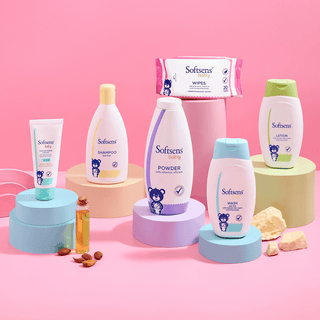
Breastfeeding is known to be one of the most natural parts of motherhood, but the truth is that breastfeeding is not always easy.Preparing yourself with the right advice and resources before you begin your breastfeeding journey can make all the difference and can help you continue nursing your baby for as long as you need. Here’s a look at all the important information you need to know before you begin breastfeeding.
1. Be prepared before baby arrives
While breastfeeding is often natural and instinctual, don’t wait to learn all about it until after your baby arrives. Do your research, prep your home and meet with a lactation consultant. These steps are really essential to make sure you have a smooth breastfeeding experience. If possible, go to a new mom’s group where you can actually see first-hand how a baby is breastfed, or watch breastfeeding videos.
2. Create a comfortable nursing area for yourself
With a newborn, you’re going to spend a majority of your time nursing your baby. So, designate a small space in your home as your nursing area and equip it with all the things you might need during nursing. Get a comfortable chair where you can sit easily with your legs up. Invest in a good nursing pillow – this can make a huge difference in your comfort level.
3. Start breastfeeding within an hour after birth if possible
If possible, try breastfeeding your baby as soon as possible after delivery. Your baby’s natural instinct is to find your breast and start suckling. The best way to do this is by allowing some direct skin-to-skin time. Put your baby on your bare chest and allow her to crawl to your breast and latch on. Give it a little time and use this skin-to-skin contact to bond with your new baby. This can help establish a good latch and in stimulating breast milk production.
4. Get the latch right
A good deep latch is the key to smooth breastfeeding. Take the help of your lactation consultant while doing this. Put your hand behind your baby’s neck and gently bring her up to your breast. Aim your nipple towards her nose so that she tilts her head up and latches on. If your baby doesn’t latch on correctly at first or it hurts you too much, start from the beginning. Read more on how to solve latch issues here.
5. Try the lying-down position
If you’re uncomfortable breastfeeding baby while sitting up, there are other breastfeeding positions you can try as well. Try the lying-down breastfeeding position where you lie on your side with a pillow between your legs for support and another pillow under your head. Place your baby on her back next to you and then gently roll her sideways towards your breast so that her nose is in line with your nipple. Support your babyby placing your hand or a pillow on her bottom. When you’re done, gently roll your baby back on her back before you get up.
6. Resolve breastfeeding issues as soon as possible.
if you experience any issues such as improper latch, pain during breastfeeding, cracked nipples and so on, don’t wait to see if it gets better. Speak to your doctor/lactation consultant and resolve them immediately.
7. Don’t wait until your baby starts crying to begin breastfeeding
Observe and learn your baby’s hunger cues. When you notice that your baby may be ready for a feed, start nursing before she begins crying. Trying to nurse an upset, wailing baby can be harder so try not to let it get to that stage.
8. Avoid using a pacifier for a few weeks
It can be hard to spot baby’s hunger cues if she is being comforted by a pacifier. Avoid using one until you have established a proper breastfeeding pattern with your baby, which usually takes 3-4 weeks.
9. Offer your baby a bottle at around 4-6 weeks
Once you have established your milk supply and settled into breastfeeding, you can start pumping and introduce your baby to a feeding bottle. Let your partner or someone else offer your baby the bottle at the nighttime feed so that you can get a proper night’s rest. Try not to offer the bottle any more than once a day during this stage.
10. Get a superior-quality breast pump
Invest in a powerful breastfeeding pump and save yourself a lot of time and stress. We recommend a good double electric breast pump with different settings and flanges (breast shields) in different sizes. However, it’s important to always consider all the options and choose what works best for you.
11. Pump to keep up your milk supply
Breast milk is produced by your body based on the system of demand and supply. The more milk you express, the more your body will produce. So, if your baby is having trouble nursing in the beginning or you can’t nurse her for any other reason, then pumping is a great way to keep up your supply of breastmilk.
Even if your baby is breastfeeding perfectly, you should ideally begin pumping within 3-4 weeks. (Before 3-4 weeks have passed, you can pump occasionally as and when you need relief or if your breasts are engorged.) You’ll be able to build a milk stash for the future and it will also free up some of your time as your partner can bottle feed the baby with the expressed milk.
A great time to pump if usually an hour after your morning nursing session, as your body tends to produce more breast milk at this time. If you want to increase your milk supply, pump in between nursing sessions if possible. Keep your pumping schedule more or less consistent.
12. Use easy hacks to clean pump parts quickly
Cleaning and sterilizing your breast pump parts each time you pump can seem like such a hassle, especially since you have a million other things to do as well. So here are some hacks that might make this process a little easier. (a) After you pump, store your pump parts in a large zip loc bag and put it in the fridge until you need to pump again. This way, the milk on it doesn’t go bad and you can wait until the end of the day to clean it properly. However, if your baby has any tummy or health issues, you should ideally sanitize the parts every single time. (b) Keep some spare pump parts for times when you’re too tired to clean but you know you’ll need them soon. (c) Soak the pump parts in a container filled with soap and hot water for a little bit to make cleaning faster and easy.
13. Nurse and pump simultaneously
If you’re comfortable with it, try nursing your baby on one breast and pumping simultaneously from the other breast.
14. Download an app to track feeding
When you’re sleep-deprived and exhausted, it can be hard to keep track of things. Simply download a free App to keep track of feedings, diaper changes, sleep patterns and so on.
15. Try and get enough sleep
When you’re breastfeeding, it’s really important to take care of your own body as well. Which is why you need to get enough rest. We understand that this isn’t easy but it is necessary for you and your baby. Let your partner handle night-time feedings and enlist the support of family and friends as well.
16. Don’t let cluster feeding stress you out
Cluster feeding takes place when your baby feeds multiple times in a span of a few hours, typically later in the evening. Cluster feeding is basically nature’s way of increasing your breast milk supply. It also happens when your baby has a growth spurt. How to handle it? First, accept the situation and don’t worry – it’s absolutely normal and will pass soon. Then, try and pinpoint what time of the day your baby usually begins to cluster feed and make sure you get anything important done before that time (including eating your meals). When the time comes, settle down in a comfortable spot with your baby and relax by watching your favourite TV shows or reading a book. Keep snacks and water nearby and enjoy this one-on-one time with your baby.
17. Care for your nipples
When you’re breastfeeding several times a day, your breasts need extra care as well. If you’re nipples are dry or cracked, apply a lanolin-based cream in between feeds. Hydrogel nipple pads can also help soothe this area. Even applying a few drops of breastmilk on your nipples can help heal dryness.
18. Drink lots of water and eat right
When you’re breastfeeding, you typically require an additional 500 calories per day. The diet for breastfeeding mothers should include well-balanced, nutritious food.Make sure you drink LOTS of water (6-8 glasses daily). Click here for a list of foods that can actually help increase your breast milk supply.
Good luck, Moms! Do you have any other breastfeeding tips you’d like to share with us? Leave a comment below.



















